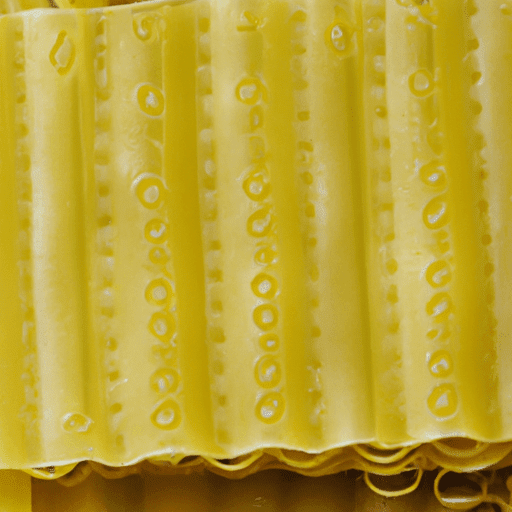All About Lasagna Noodles: A Delightful Pasta Foundation
Lasagna noodles are a quintessential ingredient in one of the most beloved Italian comfort foods, lasagna. These flat, broad strips of pasta play a crucial role in supporting the layers of succulent sauces, cheeses, and fillings that create the iconic lasagna dish. In this blog post, we will delve into the delectable world of lasagna noodles, exploring their taste, common uses in cooking, nutritional value, and a few interesting historical tidbits.
Taste and Texture
Lasagna noodles have a uniquely satisfying taste and texture, offering a delightful mouthfeel in every bite. When cooked to perfection, they become tender but retain a pleasant slight chewiness, providing the perfect base for the numerous savory flavors they hold. The taste is subtle and neutral, allowing the sauces and fillings to shine. Whether used in a classic Bolognese lasagna or a vegetarian variation, lasagna noodles infuse every layer of the dish with their comforting presence.
Common Uses in Cooking
Although lasagna is the most renowned dish featuring lasagna noodles, they can be used creatively in various recipes. Beyond the classic layered casserole, lasagna noodles can transform into roll-ups, creating individualized portions filled with enticing ingredients. Additionally, broken or cut lasagna noodles can be incorporated into soups or stews, adding a lovely thickness and heartiness to the broth.
Nutritional Value
When it comes to nutrition, lasagna noodles provide a moderate energy source, predominantly from carbohydrates. They possess a modest amount of protein and negligible amounts of fat. While lasagna noodles are not inherently packed with vitamins and minerals, by pairing them with nutrient-rich sauces, proteins, and vegetables, you can easily create a well-rounded and satisfying meal.
Interesting History and Facts
Lasagna itself has a rich history, and its origins can be traced back to ancient Greece. In fact, lasagna noodles are thought to be one of the oldest pasta shapes, with documented references dating back to the 13th century. Originally, lasagna was made with layers of pasta dough, cheese, and spices, and was even flavored with honey in some cases. Over time, this beloved dish evolved, with different regions in Italy adding their own unique touches to the recipe. Today, lasagna continues to be a beloved staple in Italian cuisine and a favorite comfort food around the world.
In Summary
Lasagna noodles are more than just a vessel for delicious sauces and fillings; they are an essential part of the lasagna experience. With their appealing taste, versatile uses, and a history steeped in tradition, lasagna noodles have earned their place in the hearts and stomachs of food lovers all over the globe. So, whether you’re savoring a classic lasagna recipe or experimenting with new culinary creations, remember to cherish and appreciate these timeless pasta sheets that bring joy to every bite.
Lasagna Noodles
Origin: Lasagna noodles originated in Italy. The word “lasagna” is derived from the Greek word “lasanon,” which referred to a cooking pot. The pasta dish, known as lasagna, has been popular in Italy since medieval times.
Common uses: Lasagna noodles are typically used in the classic Italian dish called lasagna. They are boiled and then layered with various ingredients such as meat, cheese, and sauce. The layered dish is then baked to create a hearty and flavorful meal.
Nutritional benefits: Lasagna noodles are a source of carbohydrates and provide energy. The exact nutritional content can vary between brands and types of lasagna noodles, but they generally contain protein, fiber, and some essential nutrients.
Unique properties: Lasagna noodles are wide, flat pasta sheets with wavy edges. They are typically made from durum wheat semolina, giving them a smooth and firm texture when cooked. The noodles are designed to hold up to layers of sauce and other ingredients without becoming mushy or falling apart.
Historical significance: Lasagna has a long history and has been documented in Italian culinary texts dating back to the Middle Ages. The dish was traditionally served during special occasions and celebrations. Over time, lasagna has become popular worldwide and has been adapted to include various fillings and flavors.
Remember to refer to specific recipes and cooking instructions for the appropriate preparation and cooking time for lasagna noodles.




Use the share button below if you liked it.
It makes me smile, when I see it.